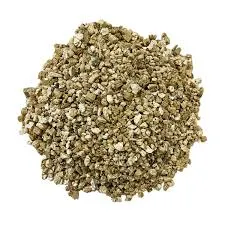Dec . 16, 2024 13:58 Back to list
best material for thermal insulation
The Best Materials for Thermal Insulation
Thermal insulation plays a crucial role in maintaining energy efficiency in buildings and contributing to comfortable indoor environments. The choice of material for thermal insulation can significantly impact heat retention in winter and heat rejection in summer. This article explores some of the best materials available for thermal insulation, considering their properties, effectiveness, and environmental impact.
1. Fiberglass
Fiberglass insulation has been one of the most widely used materials due to its cost-effectiveness and thermal performance. It consists of tiny glass fibers that create air pockets, effectively reducing heat transfer. Fiberglass is available in batts, rolls, and loose-fill forms, making it highly versatile for different applications. It boasts a commendable R-value, typically ranging from R-2.9 to R-3.8 per inch of thickness, which measures its resistance to heat flow. Additionally, fiberglass is non-combustible and resistant to moisture, though it is advisable to use a vapor barrier to prevent moisture build-up.
Foam board insulation is another excellent option for thermal insulation. It is made from various materials, including polystyrene, polyisocyanurate, and polyurethane. Foam boards offer high insulating values, typically between R-4 and R-6 per inch, making them suitable for areas with space constraints. Their rigid structure also provides additional benefits, as they can serve as a structural component, particularly in walls and roofs. Furthermore, foam boards are resistant to moisture and can help prevent air leaks when properly installed, enhancing their overall insulating performance.
3. Spray Foam Insulation
best material for thermal insulation

Spray foam insulation has gained popularity due to its superior insulating properties and ability to seal gaps and cracks effectively. This material expands upon application, filling voids and creating an airtight barrier. Closed-cell spray foam has an impressive R-value of around R-6.5 to R-7 per inch, while open-cell spray foam ranges from R-3.5 to R-4 per inch. Although spray foam insulation tends to be more expensive than fiberglass and foam board, its air-sealing properties and energy efficiency can result in significant cost savings on heating and cooling bills over time.
4. Mineral Wool
Mineral wool, also known as rock wool or slag wool, is made from natural or recycled materials such as basalt or other volcanic rocks. It provides excellent thermal insulation and fire resistance, making it a popular choice for commercial buildings and industrial applications. Mineral wool boasts an R-value similar to that of fiberglass but has better soundproofing capabilities and does not absorb water. This characteristic makes it a suitable option for areas prone to moisture, such as basements and exterior walls.
5. Cellulose Insulation
Cellulose insulation, made from recycled paper products, is an environmentally friendly choice that offers good thermal performance. It is treated with fire-retardant chemicals to enhance its fire resistance. With an R-value of approximately R-3.1 to R-3.7 per inch, cellulose performs comparably to fiberglass and mineral wool. Its loose-fill form allows it to be blown into attics and walls, ensuring efficient coverage and minimizing air leaks. Additionally, cellulose insulation has excellent soundproofing properties and a lower carbon footprint compared to synthetic materials.
Conclusion
Choosing the best material for thermal insulation depends on various factors, including the specific application, budget, and environmental considerations. Fiberglass, foam board, spray foam, mineral wool, and cellulose are all viable options, each with unique benefits and challenges. Ultimately, effective insulation not only enhances comfort but also promotes energy efficiency, leading to lower energy costs and a reduced environmental impact. Homeowners and builders should carefully evaluate their needs to select the most suitable thermal insulation material for their projects.
-
Fe-C Composite Pellets for BOF: Enhance Steelmaking Efficiency
NewsAug.07,2025
-
Eco-Friendly Granule Covering Agent | Dust & Caking Control
NewsAug.06,2025
-
Fe-C Composite Pellets for BOF: High-Efficiency & Cost-Saving
NewsAug.05,2025
-
Premium Tundish Covering Agents Exporters | High Purity
NewsAug.04,2025
-
Fe-C Composite Pellets for BOF | Efficient & Economical
NewsAug.03,2025
-
Top Tundish Covering Agent Exporters | Premium Quality Solutions
NewsAug.02,2025
